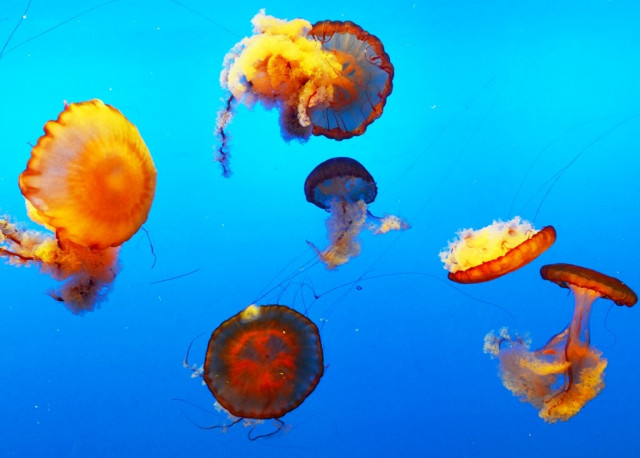
The influx of jellyfish along the Sindh and Balochistan coasts is being observed by the World Wildlife Fund-Pakistan (WWF-Pakistan) and local fishermen. Terming it ‘one of the major threats to the business of local fishermen’, Pakistan Fisherfolk Forum chairperson Muhammad Ali Shah said the jellyfish clog fishing nets and therefore affect fishing activities. He added that this upsurge in jellyfish population along the coast has resulted in decrease of catching some prime fish species.

Speaking to The Express Tribune, Shah said that fishermen have decided to shift their operations to Sonmiani Bay and the western coast of Pakistan. He explained that during the current fishing season, the jelly fish influx is causing problems for fishermen. Shah added that some fishermen are involved in exporting jellyfish to countries in the Far East, therefore, the increase in their population is only beneficial for them. However, because of the heavy influx of jellyfish, the fishermen cannot catch any other kinds of fish.
According to WWF-Pakistan technical advisor for marine fisheries Moazzam Khan, who was the former director-general of the federal marine fisheries department, about 2.5 billion tons of dried jellyfish is exported annually from Pakistan. Rhopilema hispidum and catostylus perezi are two of the leading species that are being exported from the country. The highest jellyfish export was done during 2005 and 2007, when annually about 4 billion tons of jellyfish products were exported to China and Vietnam.
Khan claimed that like many other parts of the world, the frequency of jellyfish influx along the coastlines is increasing in Pakistan. Such an increase in the jellyfish population, according to him, not only disrupts the fishing industry by also clogs cooling water intakes at power plants situated along the coast, which affects power production and causes breakdowns. He added that the jellyfish influx also reduces the population of other fish, as jellyfish eat zooplankton and consume their eggs, larvae and juveniles.
Reasons of jellyfish influx
Speaking about the causes behind the jellyfish influx, WWF-Pakistan senior director of programmes Rab Nawaz said that reasons for the sudden increase in population of some jellyfish is unclear. It is generally believed that climate change and rising sea temperatures is a favourable condition for the jellyfish to increase in massive numbers, said Nawaz. He added that overfishing is also believed to be another reason behind an upsurge in jellyfish population because it eliminates their predators. According to Nawaz, discharge of untreated sewage in the sea causes eutrophication, making more food for jellyfish.
Meanwhile, Dr Pirzada Jamal, a marine biologist at the University of Karachi, said marine biologists in Pakistan have not yet researched this issue. He added that the increase in jellyfish population is not only on Pakistani shores but is also being observed worldwide, which can be caused by some change in their nutrition. Jamal said he believes that the melting of the Himalayas is increasing the surface level of sea, which brings along zooplankton and phytoplankton (microscopic plant) that are consumed by jellyfish as food, improving the efficiency of their reproductive system.
Published in The Express Tribune, December 27th, 2016.


















COMMENTS
Comments are moderated and generally will be posted if they are on-topic and not abusive.
For more information, please see our Comments FAQ